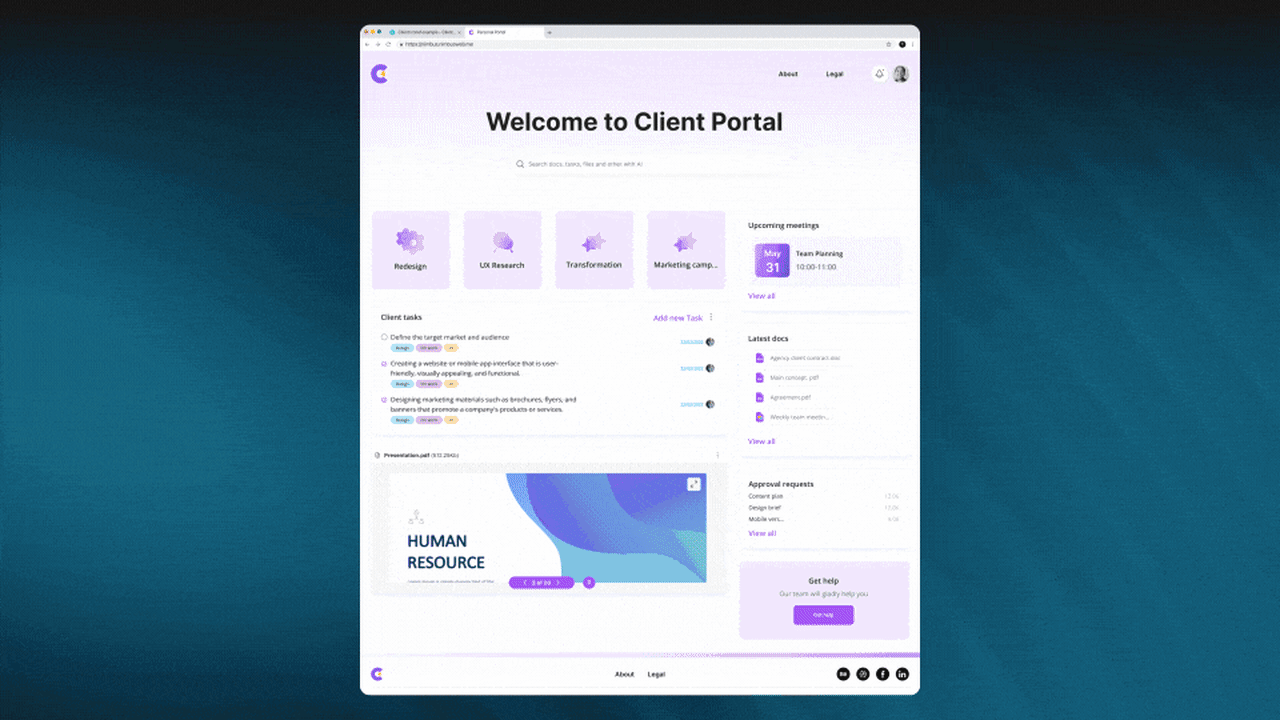The insurance market has always had a reputation for conservatism, but that has begun to change. A contract closing without a stack of paperwork was unthinkable to the average person. We could not envision resolving an insurance claim and obtaining compensation in several minutes or hours. The insurance sector, however, has benefited from the spread of insurance digital transformation. Today, the insurance technology industry (InsurTech) is among the most dynamic in the digital economy.
This article highlights the advantages of digital transformation for insurers, the technologies behind its adoption, and examples of successful transformation projects in action.
Understanding digital transformation in insurance

Digital transformation in insurance involves adopting innovative digital technologies and strategies to enhance customer experiences, operational processes, data analytics, and risk factors evaluation. Digital transformation also includes shifting away from old data processing methods and traditional business practices towards modern technologies like artificial Intelligence (AI), predictive analytics, cloud computing, etc.
Digital transformation can significantly impact the insurance industry as it offers a number of benefits like:
- Better customer experience. A fast and reliable customer support services is what we all need. Once insurance companies adopt digital channels to communicate with clients, they work more efficiently, offering their clients the necessary convenience. Companies can do almost everything digitally, like selling policies online, streamlining claims processing via mobile apps, and more. And clients love it!
- Personalized insurance products. It’s that time to use predictive analytics and AI technologies to start creating tailored client experiences to improve customer satisfaction and loyalty and lead to more business opportunities.
- Better risk management processes and risk assessment. Digital platforms make customer data analysis and risk assessment more precise, giving insurance companies more accurate rates to set and anticipate losses precisely. This allows them to set rates more efficiently as well as predict losses more precisely in future loss forecasting scenarios.
- Fighting fraud. Real-time data analytics and machine learning algorithms can identify suspicious activity that indicates fraud; insurance companies can reduce losses through this practice.
- New products and business model creation. Technologies facilitate the creation of new business models and insurance products, such as cyberattack insurance coverage or pay-as-you-go plans, making new product development possible and meeting consumer expectations.
- Adapt to rapidly changing market conditions. Insurance industry developments occur constantly due to regulatory, economic, and climate influences; implementing digital transformation enables organizations to respond and adapt more swiftly.
Real-life Use Cases and Success Stories
Streamlining Operations with Technology
Insurance companies process vast amounts of data every day. This increases the amount of time required to perform the daily routine operations. In this case, integrating innovative technologies like cloud platforms, (IoT) sensors, and machine learning can significantly streamline business operations. Adopting new technologies simplifies streamlining operations, automates manual processes, and provides data security.
For instance, besides their traditional benefits, cloud platforms help insurance companies reduce operating costs and increase processing speed, which is already a good reason to shift data to the cloud platform.
Internet of Things (IoT) sensors are a great choice if a company wants to create a more customer-centric model. (IoT) sensors can improve underwriting choices and preventative actions, mitigate risks, and allow individualized pricing based on individual customer behavior.
Enhancing Customer Experience
Digitalization may enhance customer experiences yet also raise customer expectations. Modern customers want instantaneous information and seamless digital customer interaction paired with customized service from insurance executives – something insurers must meet by investing in easy-to-use interfaces, multichannel digital capabilities, and responsive support services that meet these customer demands. Failing to deliver satisfactory digital experiences could result in customer churn.
An effective strategy to attract more clients is using an omnichannel approach. You can create customer groups based on their interests, track behaviors and requests as well as complaints, ensure clients have multiple communication channels available to them for communication purposes and service requests, and finally, ensure customers can quickly get your products or services. Based on all this, you can make more informed decisions, making an omnichannel approach crucial for any insurance company going through digital transformation.
By giving your clients a positive digital experience, your company enhances its brand reputation and position among rivals.
Innovative Product Development

Innovations and new technologies are precisely what can help an insurance company remain competitive and stay on top.
Organizations that are not scared of integrating new digital tools and accepting challenges are the market’s leaders because they always prioritize clients’ needs by offering them standout and comfortable solutions. That’s exactly how you increase customer loyalty and make your clients happy with the services a company provides. Isn’t that already enough to take a risk and try a new product?
The possibilities are endless nowadays everywhere, even in the insurance industry. Your company can benefit from tools that tailor car insurance premiums to each customer or use IoT data to launch parametric insurance for flight delays that will automatically pay out if certain conditions are satisfied.
You can even integrate an AI-powered face recognition used in medical centers to diagnose patients’ conditions to speed up the underwriting process for health insurance and improve the entire client experience.
You can choose any technology or new tool that will benefit your company; just make sure you do it because other companies will not hesitate when deciding whether to accept the challenge and win or back up and lose clients.
Key Drivers of Digital Transformation in Insurance
Changing Customer Expectations
Many digital transformation initiatives are aimed at enhancing experiences to improve consumer relations. Global insurance consumers place a high value on digital experiences. EY survey results show that only 40 percent of genuine customers decide whether to keep their insurers based on experience quality. The increasing expectations of consumers and their willingness to change providers are forcing insurers into greater accountability, transparency, and effectiveness. These attributes are often the by-products of digital transformations.
The experience is often reliant on the simplicity of the interactions. Insurers can identify customers when they switch channels in the middle of a claim process or while they’re researching new policies. Customers want to interact with insurers through digital channels and other methods. Insurers are expected to have consistent context and information across channels to recognize their customers’ goals and understand where they are on the customer journey. Hand-offs across channels must be seamless. It’s a basic customer expectation.
Competitive Advantage
Insurance is a highly competitive industry, and new players constantly change the traditional business model. The digital transformation gives insurers the flexibility to adapt quickly to changes in market conditions, such as regulatory changes or new customer demands.
Neoinsurers offer an assortment of products and services online 24/7. This makes them particularly appealing to younger customers, such as millennials, who prefer digital services.
As part of an effective response to this new threat of neoinsurers, established players in the insurance industry should provide customers with online access to all products and services offered, in addition to offering new services and becoming sources of advice in customers’ lives. To compete effectively against newcomers like neoinsurers it will also be essential that insurers offer customers full product knowledge as part of an overall offering from established players in this space.
Companies that incorporate digital technology quickly into their core system could enjoy an edge. They can use this advantage to continuously innovate, offering products and services to meet the changing needs of their customers.
Challenges in Digital Transformation
Data Privacy and Security
Cyber attacks have increased exponentially and continue to pose an immense cybersecurity challenge to multiple insurance firms. Given the volume of collected information and its type, insurance providers must remain vigilant if they want to safeguard both customers and online platforms from threats.
Cyberattacks fall into two main categories. First are cyberattacks designed to disable systems for their victims. For instance, a company may find that its website has been temporarily disabled until payment (usually cryptocurrency) has been received from ransom thieves. Second comes malware, which invades systems to steal or modify data stored therein.
Cyber insurance providers face additional responsibilities: they must defend against hackers to manage risk and preserve customer trust. Appropriate protocols like multi-factor authentication or other identity verification technologies must be put in place by insurance firms to keep client information safe.
Personnel and processes capable of handling various risk scenarios must be deployed to respond effectively to threats and privacy issues.
Cybersecurity is one of the primary considerations when selecting an insurer or financial institution, with customers placing great value on data security as one of their criteria for choosing an insurer or bank. Data protection serves as the cornerstone of trust among customers within this sector.
Regulatory Compliance

Insurance is a highly regulated industry that must abide by numerous rules and regulations, which requires them to maintain large amounts of paperwork and data storage – making digitizing processes challenging at best. To remain compliant, insurers need to work in close conjunction with regulators.
Regulators present insurers with an enormous challenge. The insurance sector is heavily regulated, and digital transformation could bring changes that breach current relevant regulations.
Insurance carriers must cooperate closely with regulators to ensure their digital transformation projects comply with all pertinent regulations.
Solution to Run Insurance Digital transformation
Though some businesses fail to fully appreciate the advantages digital transformation brings for the insurance sector, those reading this article know its positive results are indisputable, mainly if using FuseBase (formerly Nimbus) during the transformation journey.
FuseBase is a solution built specifically around meeting client-centric businesses’ needs for digital transformation and can serve as an indispensable asset during and beyond that process. That makes Fuse Base one of the go-to solutions in its class.
FuseBase simplifies interactions between you and clients while streamlining workflows and increasing customer engagement – perfect for an insurance provider looking for a digital transformation tool!
Why FuseBase?

FuseBase (formerly Nimbus) stands out among digital transformation solutions because it goes beyond simple digital transformation tasks; it provides an all-inclusive toolset designed to streamline internal and external processes while supporting teamwork and keeping all employees involved during its transformation journey.
Client-first businesses are at the core of everything the platform does; its primary mission is to assist companies with keeping clients satisfied and loyal to your firm.
FuseBase provides your company with an abundance of incredible features that will enable it to take full advantage of digital transformation efforts while enjoying it as well. Let us describe some of these tools by showing how they can simplify business processes:
- Client Portals. Remember when we talked about integrating new technologies? Well, this is the case. FuseBase’s client portals feature can revolutionize how your company interacts with clients. You can create branded online portals with custom styling to simply access project details, provide approvals, and collaborate seamlessly. Client Portal also offer a white-label solution and multiple external integrations (Google Docs, Calendly, etc.) So, in case your clients urgently need to update insurance policy details because of a changed address, you don’t have to waste time on countless emails or phone calls. Instead, a person goes into a branded portal, inputs new information through a user-friendly form, attaches new documents, and, after submission, the company gets this request. There are no delays or miscommunication, just a simple and fast process that ends with a great client experience.
- Data collection. With the data collection feature, gathering crucial client information is a breeze. You can embed forms, surveys, and analytics into pages without switching to multiple apps. A perfect digital transformation journey is all about the streamlined, user-friendly approach to collecting data and enhancing efficiency. This feature will give you exactly what you need. Imagine an insurance company claims data and feedback from clients about their experiences. How would one do all that? Sending out emails and making phone calls is time-consuming and totally unnecessary. FuseBase’s data collection feature streamlines client feedback within their portal. All clients have to do is submit feedback via an embedded survey and include customer satisfaction levels, suggestions, or complaints. A client-oriented insurance service, in turn, can use real-time notifications to deal with any concerns promptly and use integrated tools to get data about client experiences and use it to improve customer engagement.
- Project management. Consolidate tasks, timelines, and approvals into clear project boards and workflows with a project management feature if you want to improve transparency and collaboration. An insurance company can create task self-service, client dashboards, Kanban boards, time-tracking systems, and more to create a space where all clients and companies can track and manage progress efficiently.
Imagine your company planning a product launch with multiple departments and stakeholders participating. Task coordination may become challenging; with this feature, however, creating an organized project board with tasks to track can become much more straightforward. Communication among project participants is enhanced via an effective project board, and real-time task dashboard updates provide real-time insight. This collaborative approach ensures all members stay on the same page while speeding up approvals and decreasing delays – the insurance company expertly manages each phase of the project lifecycle to deliver client experiences that are both transparent and structured. - FuseBase AI. AI capabilities continue to amaze us; FuseBase’s AI assistant is no exception! If you’re looking for a tool that will unburden your team from dealing with the manual processing of tasks and let you concentrate on more important ones, FuseBase AI is what you’ve been looking for. It will help you extract insights from large data sets, will help to generate proposals and briefs, and more!
Now, let’s get into the details. Sometimes, when developing and marketing new insurance products takes more effort than we expect to create a compelling proposal, content generation features become invaluable tools. FuseBase’s AI assistant knows all the nuances surrounding the insurance industry and can quickly craft tailor-made proposals for each insurer or policyholder. Imagine manually dealing with vast quantities of sensitive customer data: that would be hell on Earth! Instead, FuseBase AI offers a solution: its machine learning algorithm can analyze everything from policy details and claims history, extracting insights that people might miss while making better-informed decisions with already identified patterns, technology trends, and correlations.
Summing up
Insurance digital transformation has already influenced the insurance industry and will continue as technology evolves. That is why there’s no better time than now to start your company’s digital transformation to facilitate interactions with clients and make your company a leader in the insurance sector.
If you face this challenge and start your digital transformation with FuseBase now, your company will improve its customer-oriented approach and prosper from all the other benefits this journey will bring.


